William O’Brien Jr
Park Books, 2016
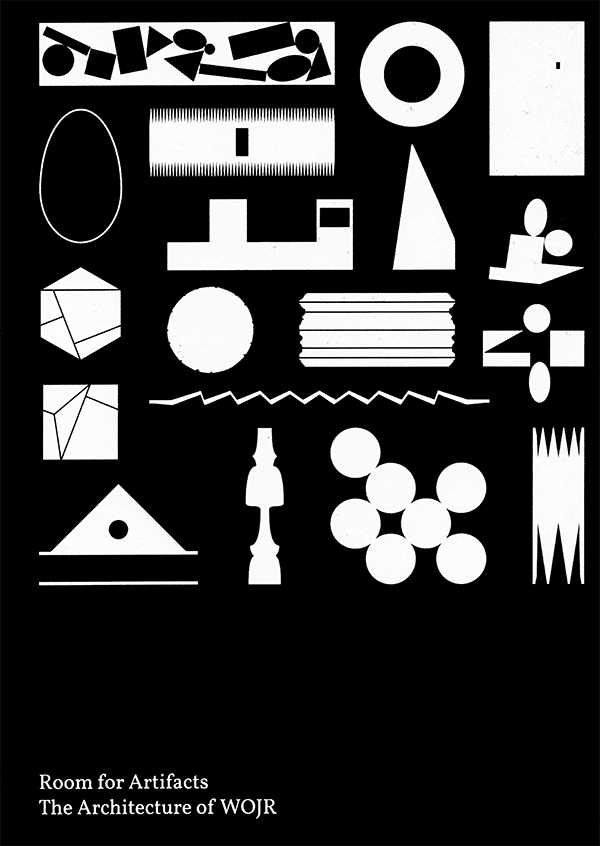
Room for Artifacts is a monograph devoted to the output of WOJR, a design practiced based in Cambridge, Massachusetts, led by Massachusetts Institute of Technology professor William O’Brien Jr. The content is supported with essays by John McMorrough, Dora Epstein Jones, and Nader Tehrani, offering close readings of WOJR’s oeuvre. But it is also much more than just a monograph; it is a graphic and representational treatise consisting primarily of images (see Figure 1, cover). The latter manifest as renderings, diagrams, or drawings—distinctions that are implicated in the examination of form and formatting, which O’Brien undertakes in an effort to articulate a postdigital language of “intrigue,” or what the literary critic Sianne Ngai has referred to as the aesthetics of interest and interesting.1 As defined by Ngai, this aesthetic synthesizes “affect-based judgement and concept-based explanation” within a network of knowledge-making actions and objects.2 It is a game of language and grammar familiar to architects—one that locates its subject through a fuzzy similarity and likeness, rather than by way of linguistic opposition.3 For O’Brien, opposites attract. The compounding of terms such as “parametric and primitive” or “systemic and idiosyncratic,” which he invokes when describing his Totems (2012) project, yield a method for reorganizing information that might privilege a historical ideal, a cultural meme, or the explicit demands of contemporary manufacturing and production processes.4 Thus, traditional associations and terms such as composition, form, representation, and structure, among others, are subject to a process of defamiliarization or decontextualization intended to produce meanings and effects that are a controlled shift from what is known, without necessarily amplifying their intrinsic otherness. In this sense, Room for Artifacts confronts those twentieth-century models of abstraction that were based on constructing systems of difference and oppositions as a primary means of cultivating an “an aesthetic resolution to the philosophical contradiction between idealism and materialism.”5
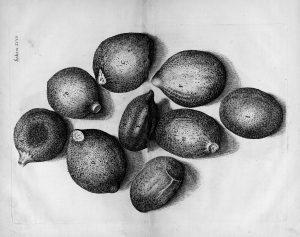
The organizational structure of the book, or “rooms,” as described by O’Brien, is a “triptych.” Though sincere, this painterly reference does not accurately describe or do justice to O’Brien’s precise and rational curatorial strategy, which more closely resembles the publications of enlightenment-era natural philosophers. Both Systema naturae (1735), by Carl Linnaeus, and Micrographia (1665), by Robert Hooke (see Figures 2, 3), are examples of morphological studies of the natural world that leveraged systematized and regularized modes of representation and reproduction, as a means of constructing a form of “objectivity” that instrumentalizes the familiar as interesting.6 This application of a “subjective vision” enabled a recategorization and comparison of familiar objects and things based on observed and projective, similarities and differences, which was leveraged in the production of new knowledge (see Figures 4, 5).7 A recent history of architectural publications reveals various attempts at mimicking the regularizing format of architectural and engineering manuals of the nineteenth and twentieth centuries and, to a greater extent, the comparative approach of natural philosophy manuals on which they were based—Farshid Moussavi’s series comprised of Function of Ornament (2006), Function of Form (2009), and Function of Style (2015), for example, or Reiser + Umemotos’s Atlas of Novel Tectonics (2006), Atelier Bow-Wow’s Pet Architecture Guide (2001) and Made in Tokyo (2001), François Blanciak’s Siteless (2008), and Herzog & deMeuron’s Natural History (2003), among many others—but none approach the same degree of defamiliarization of the subject or epistemological success as Room for Artifacts.8 Rather than present projects chronologically or as isolated design endeavors, O’Brien adopts a strategy using “three lenses, grouped by three modes of representation” (pg. 8). Every project, regardless of scale or complexity, appears in each of the three corresponding sections, diagrams, drawings, and visualizations.
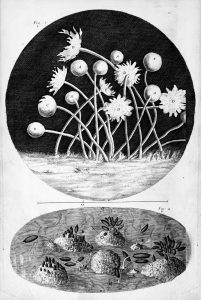
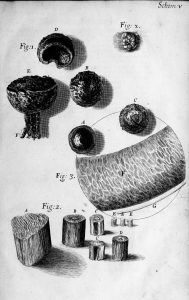
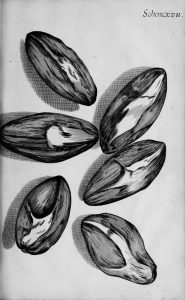
What is the difference between a rendering and a photograph (see Figure 6)? What is the difference between an elevation and a tool path? While representation provides a comfortable cradle of references, its most emphatically critical action today is not the precise description and measurement of a form, but is instead an explicit examination of format and output (for after all, any three-dimensional modeling program today can produce an infinitely varied array of images of a self-same form). For example, the organization and delineation of project drawings in Room for Artifacts deliberately excludes the scaffold of relational information; reference scales, section and elevation tags, north arrows, and titles are removed (see Figures 7, 8). As a result, annihilating the traditional correlation between plans, sections, elevations, tool paths, and diagrams yields an equivalency among artifacts as well as among individual fragments. Figure-ground relationships become inscribed in profiles, which operate interchangeably as both paths and cuts (see Figure 9).
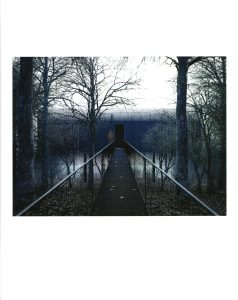
Art and architectural history is ever present throughout the work, manifested in inherited formalisms, structures, and other “anachronistic” ordering systems. It is also legible in the overall format of the book, which like the previously mentioned natural philosophy manuals—as well as their relatively recent successors—authors its own archaeology in the process. Yet, history is also subject to removal and its status as a fundamental aspect of architectural disciplinarity is simultaneously challenged and reinforced. The most discernible absence is the foregrounding of historical precedent. The usual suspects, such as Palladio’s Villas, Laugier’s Primitive Hut, Paxton’s Crystal Palace, and Venturi and Scott-Brown’s Vanna Venturi House, to name just a few, do not appear to serve in their usual capacity as ambassadors for design credibility. When projected alongside postdigital practice, this ghost of history brings to mind a quote from Hal Foster’s introduction to Return of the Real:
In Room for Artifacts, the result is a meditation on the shifting premise of architectural disciplinarity. While some familiar aspects remain intrinsic to every project, the work subtly dismantles the notion that disciplinarily has a fixed origin or that it is premised on the maintenance and continued refinement of aesthetic doctrine, representational orthodoxies, and other “conservative tendencies.”10 Rejecting or historicizing these norms is not the intent; instead Room for Artifacts places an intense focus on documenting the affect of reformatting the familiar.
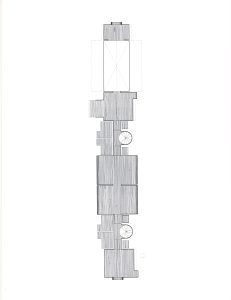
Accordingly, the self-conscious and self-constituted postdigital project articulated by O’Brien reminds us that the potential outcome of contemporary design methods are defined by the sublimation of multiple meanings, histories, and future trajectories. Any ownership or allegiance of form to historical precedents is eschewed in favor of a curatorial approach reminiscent of Duchamp’s ready-mades. The presence within the work of a historical fragment or signifier serves to alter the meaning of the original, while producing a novel whole that is “vaguely familiar.”11 A more familiar extrapolation may lie in the admission that many of us work almost exclusively in a virtual three-dimensional environment, where there is no up or down; scale is both infinite and nonexistent; materials are realistic illusions; and the forces of gravity, wind, and temperature are without substance. And despite the digital ethereality, which confines all ideas to the limits of the modulation of signals and information, we should welcome the ability to endlessly format and output the results of our labors in ways that radically alter their affect and character.
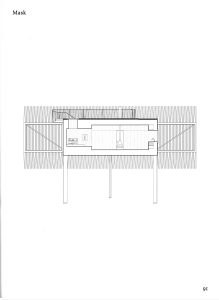
To what end are these abilities directed? What are the new rules of judgment outlined by the visual treatise of WOJR? Architecture’s recent inward shift is characterized by Michael Meredith as the rejection of the “positivist expressionism” associated with a surplus of visionary proposals aimed at addressing a vast territory of external crises.12 If the dictum “Make New History,” as deployed by Sharon Johnston and Mark Lee in their curation of the recent Chicago Architecture Biennial, is any reflection of this proposed “indifference,” it reveals a profound internal crisis regarding the terms and basis for architectural disciplinarity.13 Although Room for Artifacts does not explicitly seek to redress these conditions, its exquisitely controlled disassembly and reassembly of representational norms, as well as the measured conflation of image and information, succeeds in articulating modes of alter-disciplinarity. Fortunately, this alter-disciplinarity does not succumb to the ritual sacrifice of the contemporary in the service of further promoting the now institutionalized aesthetics and ideologies of previous generations.
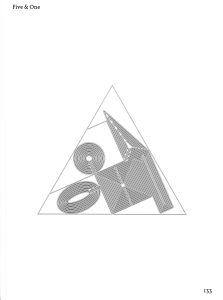
How to Cite this Article: Tejchman, Filip. Review of Room for Artifacts: The Architecture of WOJR, by William O’Brien Jr. JAE Online. March 13, 2018. https://jaeonline.org/issue-article/room-artifacts-architecture-wojr/.






